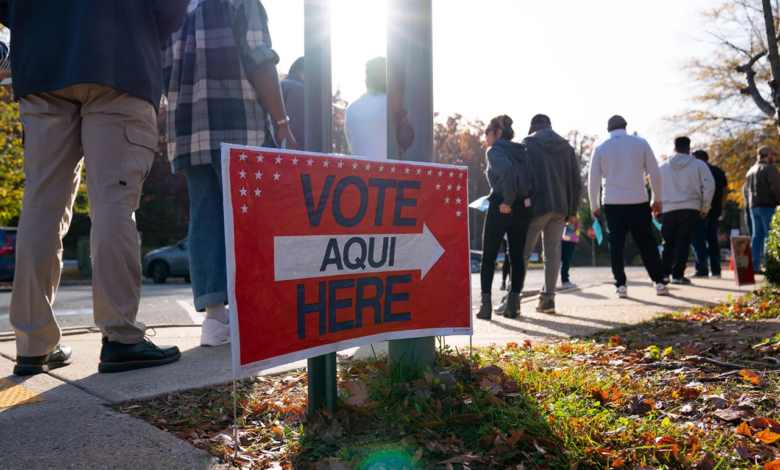How to Protect Your Voting Rights in New York
Protect your voting rights in New York with this essential guide on registration, absentee ballots, early voting, and combating suppression.

Protecting your voting rights in New York is essential to ensuring your voice is heard in local, state, and national elections. Voting is the foundation of democracy, but many New Yorkers face obstacles—from registration issues to polling place challenges that can prevent them from casting their ballots. Whether you’re a first-time voter or a longtime resident, understanding your Voting Rights and the resources available to you is the first step toward safeguarding your ability to participate in elections.
New York has made significant strides in expanding voter access, including early voting, no-excuse absentee ballots, and automatic voter registration. However, laws and procedures can change, and misinformation can create confusion. This guide will walk you through everything you need to know to protect your voting rights in New York, from registration deadlines to handling voter intimidation. By staying informed and prepared, you can confidently exercise your right to vote and help strengthen democracy in the Empire State.
How to Protect Your Voting Rights in New York
Understanding Your Voting Rights in New York
New York State has specific laws designed to protect voters, but staying informed is key to exercising your Voting Rights effectively. The New York Constitution guarantees the right to vote to all eligible U.S. citizens who are at least 18 years old and residents of the state. However, certain restrictions apply, such as being mentally competent and not currently incarcerated for a felony conviction (though parolees can vote).
One of the most important steps in protecting your voting rights is ensuring you are properly registered. New York requires voters to register at least 10 days before an election, either online, by mail, or in person. The state also allows same-day registration during early voting, but this must be done at designated sites. Keeping your registration up-to-date, especially if you’ve moved or changed your name, is critical to avoiding issues on Election Day.
Voter ID Requirements and Accessibility
Unlike some states, New York does not require a photo ID to vote in most cases. First-time voters who registered by mail may need to show identification, such as a utility bill or bank statement, but generally, you can vote without one. However, bringing an ID can help resolve any discrepancies if your registration is challenged.
Accessibility is another key aspect of voting rights. New York mandates that polling places accommodate voters with disabilities, offering features like accessible voting machines and curbside voting. If you encounter barriers, you have the right to request assistance or file a complaint with the New York State Board of Elections.
Early Voting and Absentee Ballots
New York has expanded early voting, allowing registered voters to cast their ballots at designated polling locations up to 10 days before Election Day. This flexibility helps reduce long lines and ensures more people can participate. Additionally, any eligible voter can request an absentee ballot without needing an excuse, making it easier for those with busy schedules or health concerns to vote.
To request an absentee ballot, you must submit an application either online, by mail, or in person. The deadline is typically a week before the election, but it’s best to apply early to avoid delays. Once received, follow the instructions carefully, sign the ballot envelope, and return it on time—either by mail or at a designated drop box.
Combating Voter Suppression and Intimidation
Voter suppression and intimidation are serious threats to democracy, but New Yorkers have tools to fight back. Suppression tactics may include misleading information about voting requirements, last-minute polling place changes, or aggressive challenges to voter eligibility. Intimidation can take the form of hostile questioning, unauthorized “poll watchers” overstepping boundaries, or even threats. To combat these tactics, know your Voting Rights. No one can legally harass you, demand unnecessary ID (unless you’re a first-time mail-in registrant), or block you from voting without cause. If you encounter suspicious behavior, report it immediately to poll workers or call the Election Protection Hotline at 866-OUR-VOTE. Organizations like the ACLU of New York and Common Cause also monitor elections and can provide legal support if your Voting Rights are violated.
New York law prohibits interference with voting, and authorities can remove disruptive individuals. By recognizing suppression tactics and acting decisively, voters can help ensure fair access to the ballot box for all. New York law prohibits any form of coercion or interference at polling sites. You have the right to vote free from harassment, and election officials are required to maintain a safe environment. If your registration is wrongly challenged, you may request a provisional ballot, which will be counted once your eligibility is verified.
What to Do If Your Rights Are Violated
Stay Calm & Document the Incident
Write down details immediately (time, location, names of individuals involved). Take photos or videos if safe and legal (polling places may have restrictions). Get contact information from any witnesses.
Report the Issue to Poll Workers or Election Officials
Every polling site has trained officials who can resolve problems. If they cannot help, ask to speak with a supervisor or the site coordinator.
Request a Provisional Ballot
If your eligibility is challenged, you have the right to cast a provisional ballot. This ensures your vote is recorded while officials verify your registration.
Contact Election Protection Hotlines
Call 866-OUR-VOTE (866-687-8683) for immediate assistance from nonpartisan legal volunteers. Spanish speakers: 888-VE-Y-VOTA (888-839-8682).
File a Formal Complaint
Submit a complaint to the New York State bond of Elections. Contact civil rights groups like the NYCLU or the Brennan Center for Justice.
Escalate if Necessary
If the violation involves discrimination or intimidation, report it to the U.S. Department of Justice’s Civil Rights Division.
Follow Up
Check if your provisional ballot was counted (contact your county Board of Elections). Share your experience with voting rights organizations to help prevent future issues.
Read More: How to Expunge a Criminal Record in New York
Conclusion
Protecting your voting rights in New York starts with being informed and proactive. By understanding registration rules, knowing your options for early and absentee voting, and recognizing signs of suppression, you can ensure your ballot is counted. Voting is not just a privilege—it’s a powerful tool for change, and every eligible voter should be able to participate without obstacles.
As elections evolve, staying updated on new laws and advocacy efforts will help safeguard democracy for future generations. Whether through volunteering as a poll worker, educating others, or supporting voting rights organizations, you can play a role in strengthening electoral integrity. Remember, your vote matters, and taking these steps ensures that your voice is heard loud and clear in New York’s democratic process.
FAQs
Do I need a photo ID to vote in New York?
No, New York generally does not require a photo ID unless you’re a first-time voter who registered by mail.
Can I vote if I have a felony conviction?
Yes, you can vote if you’re on parole or probation. Only those currently incarcerated for a felony cannot vote.
How do I check my voter registration status?
Visit the New York State Board of Elections website or contact your local county board to verify your registration.
What should I do if I encounter voter intimidation?
Report it immediately to poll workers or call the Election Protection hotline at 866-OUR-VOTE (866-687-8683).
Can I vote early in New York?
Yes, early voting is available at designated polling locations starting 10 days before Election Day.











